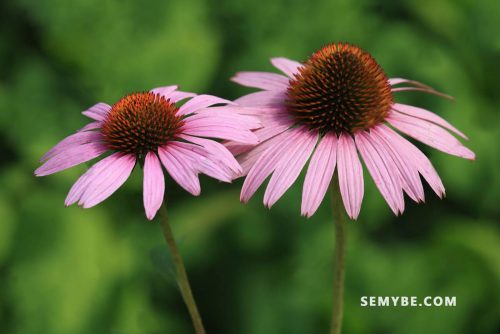
Echinacea Purpurea
History and use
Originating from the center of the United States, three species of medicinal echinacea are used: Echinacea angustifolia, E. purpurea, and E pallida. Wild species are threatened with extinction, so only cultivated plants, such as Echinacea purpurea, are used. It is propagated by sowing in the spring or by division of the root in winter, appreciates the hard, sandy soils. The flowers are picked in full bloom and the roots are torn in autumn after four years.
Description of the plant
Echinacea is one of the most important medicinal plants, has antibiotic, antibacterial, antiviral properties and stimulates the immune system. lt can prevent and treat infections such as colds, flu and promote the maintenance of skin infections. Echinacea is also a good healing.

Curative action
Amerindian Medicine
The Conianches used it as a remedy for tooth and throat ailments, while the Sioux used it for rabies, snake bites, and infectious conditions.
Uses
- In the form of mother tincture, in prevention: take 1 dose, morning and evening, for three weeks, then 1 dose, morning and evening, one week per month, in curative: take a dose of mother tincture, three times per day day.
- In infusion: let infuse, for ten minutes, 1g of roots or dried whole plants, in 1 cup of boiling water. Drink from 1 to 6 cups a day. In decoction: boil 1g of roots in 1 cup of water for 10 minutes Drink up to 3 cups a day.
- In decoction: boil 1g of roots in 1 cup of water for 10 minutes Drink up to 3 cups a day.
- In standardized solid extracts, the concentration may vary from one product to another: take 1 g of echinacea, three times a day.
- Echinacea should not be used for more than as it may have on the immune system. Three consecutive weeks negative effects, Echinacea is contraindicated for people with autoimmune disease or progressive diseases. It’s also not recommended for persons allergic to plants of the asteraceae family.




